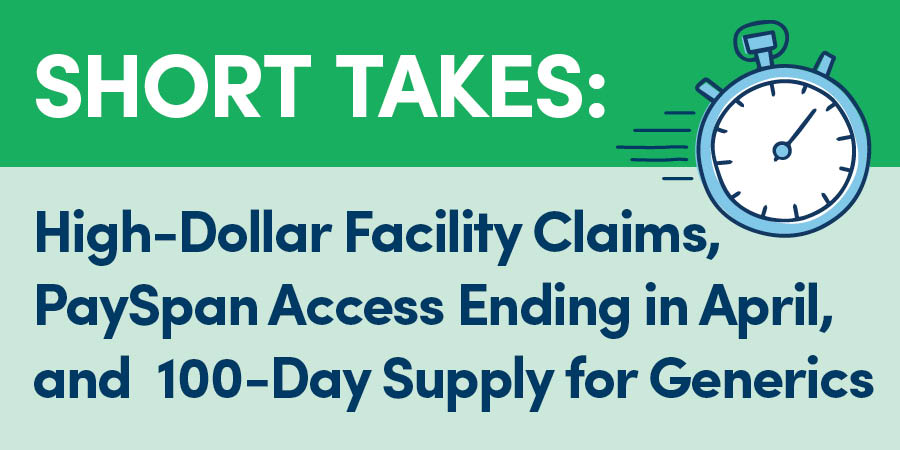
Acute Care Facilities: Itemized Bills Required for Local and Host Claims Starting at $50,000
Providers will be required to submit itemized bills for high-dollar, inpatient care (costing $50,000 or more) at acute care facilities, effective February 6, 2024, for both local and host (out of area) claims. This new requirement — the previous threshold was $100,000 — is part of an initiative by Highmark to reduce billing and/or payment errors on high-dollar claims that occur both in-network (INN) and out-of-network (OON). For more information, click here .
.
Access to PaySpan Ending in April 2024
Effective April 30, 2024, you will no longer have access to Highmark/Health Now Electronic Funds Transfer (EFT) information or Electronic Remittance Advices (ERAs) in PaySpan. This includes all claims payments with dates of service prior to January 1, 2023 — when we moved from our legacy Health Now systems onto Highmark systems.
Prior to
April 30, 2024, please download all historical data you would like to retain for your records. To read the entire
Special Bulletin, go
here
.
Medicare Part D: Most Generics Available for 100-Day Supply in 2024
Effective January 1, 2024, Highmark is making some changes to the medications on our Medicare Part D formularies. These changes will ensure the safe and effective use of prescription medications while ensuring they are affordable for our members.
Most members with Medicare Part D coverage will be able to receive up to a 100-day supply for generic medications on Tier 1 and Tier 2 of Highmark’s formularies. When appropriate, roviders are encouraged to write prescriptions for this higher day supply. Some examples of Tier 1 or Tier 2 drugs eligible for a 100-day supply include Lisinopril, Metformin, and Atorvastatin.
To read the Special Bulletin, click here .
.
Claims Culprit: Sequela Code Errors Lead to Increased Denials
Highmark is seeing an uptick in claims with sequela code errors, resulting in increased denials for providers. To avoid this type of error, it is necessary to include both the original injury code that precipitated the sequela as well as the sequela code.
Reminder: The sequela code can never serve as the primary or only diagnosis code; it must always be accompanied by the original injury or condition code. To learn more, go
here
.


Provider News, Issue 12, December 2023 | © 2023 Highmark Blue Shield of Northeastern New York


 .
. .
.
 .
. .
.